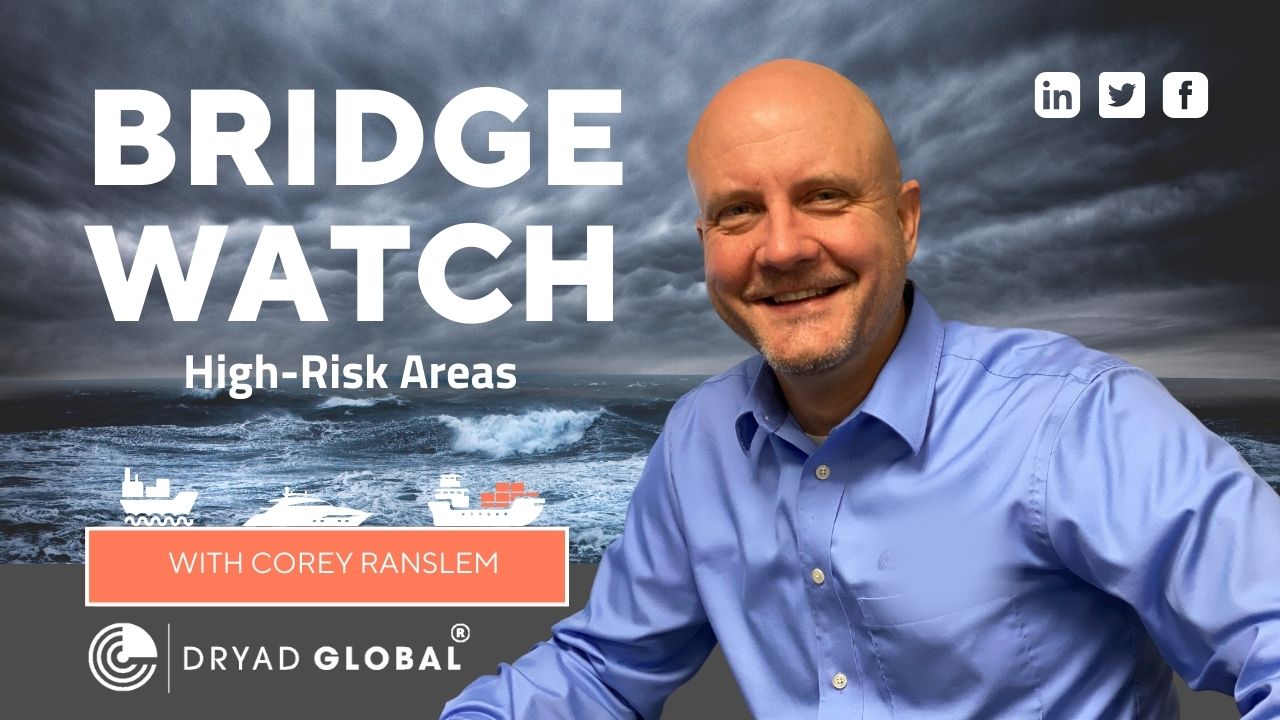In this week’s Bridge Watch, Dryad Global CEO Corey Ranslem talks about High-Risk Areas.
High-Risk Areas (HRA’s) are designated by shipping organisations, the IMO, and the Joint War Committee. In the early to mid-2000s when piracy began to spike, the sea off Somalia from the Red Sea, Gulf of Aden, and into the Indian Ocean was designated as an HRA. Certain Flag State requirements, tracking and reporting standards, and increased best management practices were designated which also led to an increase in war risk premiums for vessels transmitting the designated HRA.
Industry organisations have now recommended to the IMO that this HRA goes cold as no incidents have been reported since 2018.
At 0001 UTC on 1 January 2023 the Indian Ocean High Risk Area (HRA) for piracy will be removed. The removal of the HRA reflects a significantly improved piracy situation in the region, but voyage preparation, threat and risk assessment is essential when following Best Management Practice 5 (BMP5).
However, as one area goes cold, another goes hot. The northern part of the Black Sea has now been designated a High-Risk Area as a result of the Ukraine-Russia conflict. Yet, the situation can change. The Gulf of Guinea still sees an HRA in place but not all parts of the HRA are hot. Sometimes the time of year can dictate whether an HRA is hot or not. In the Gulf of Guinea, there has been a decrease in piracy, attempted boardings, and hijackings and there are isolated incidents in some specific areas.

What’s imperative is that fleet managers utilise companies that provide trusted, reliable, informed risk intelligence sources. This allows them to make informed, robust plans to safeguard their vessel, crew, and cargo from maritime risk. Reach out to the experts at Dryad Global for worldwide port, maritime and land-based risk intelligence or transit risk assessments. www.dryadglobal.com





